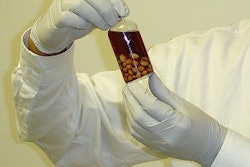Last November, the U.S. Centers for Medicare and Medicaid Services (CMS) published its Medicare Physician Fee Schedule (MPFS) final rule for 2008 in the Federal Register. The rule included an anti-markup provision, which delineates a framework within which an imaging center's charges to a physician practice are determined, effectively taking the profit out of the professional component.
Intended to go into effect January 1, the anti-markup rule has been delayed until 2009. But despite the postponement, questions remain for radiology businesses as to how to respond to this new guidance, according to W. Kenneth Davis Jr. of the law firm Katten Muchin Rosenman. Davis gave attendees of the 2008 Radiology Business Management Association (RBMA) meeting in San Francisco an overview of the rule and how it affects radiology groups.
"There has been a profound lack of understanding in the healthcare community as to the implications of this rule," Davis said. "People just don't understand the kind of dramatically adverse consequences it could have for diagnostic tests. And this is not about those 'bad self-referring physicians' -- a lot of radiology groups will have to deal with the potential consequences of this rule as well."
Managing markups
The anti-markup rule only applies to Medicare beneficiaries, and refers to diagnostic tests such as x-rays and laboratory tests, although it does not apply to certain clinical diagnostic laboratory tests.
If a physician or other supplier bills for the technical or professional component of a diagnostic test ordered by the physician or another party related to him or her through what CMS calls "common ownership or control," and the diagnostic test is purchased from an "outside supplier" or done at a location other than the "office of the billing physician or other supplier," then the payment is determined by the lowest value of the MPFS, the actual charge, or the net actual charge.
Crystal clear, right? But the terms of the rule create some confusion, according to Davis.
CMS describes common ownership as "significant ownership or equity in the provider and the institution or organization serving the provider." It defines an outside supplier as someone who is not an employee of the billing physician, and the office of billing physician is the medical office space where that person regularly performs patient care. So what exactly is a "diagnostic test"? When is such a test purchased from an outside provider? Did CMS intend that the definition of the "office of the billing physician" be such a limited one? What does "regularly furnishes patient care" mean, and how is it determined? It's uncertain, even to CMS, according to Davis.
"CMS is trying to prevent physician groups from marking up the professional and technical components of diagnostic tests," Davis said. "But what constitutes a diagnostic test? They didn't give us much guidance on that. We talked to the person at CMS who actually wrote the rules, and he couldn't tell us which diagnostic tests it applied to -- even he wasn't certain."
The anti-markup rule will have significant impact on radiology groups, not the least of which being that group practices that bill globally for the professional and technical components can't charge Medicare more for the professional component than they pay to the radiology group, according to Davis. But group practices may try to get around this by paying for the professional component for Medicare beneficiaries with one fee schedule and for all other beneficiaries with another, he said.
"They may try to pay you the Medicare Physician Fee Schedule for Medicare beneficiaries, but for everyone else, they'll pay you 80% of Medicare," Davis said.
Anti-markup and Stark
A key question for radiology businesses is how the anti-markup rule interacts with the Stark law. Don't assume Stark-compliant diagnostic test arrangements also meet the terms of the anti-markup guidance, according to Davis.
"Current compliance with the in-office ancillary services exception does not by itself obviate the need to comply with the anti-markup rule," he said. "And independent diagnostic testing facility joint ventures set up under the rural provider exception may still be subject to the rule if the referring physicians are found to be related to the joint venture.”
The Stark law's definition of "entity" has changed: Now the term doesn't include a physician's practice when it bills Medicare for the technical or professional component of a diagnostic test for which the anti-markup provision is applicable.
In other words, the Stark ban on physicians making a referral to an "entity" for the provision of a designated health service doesn't apply to a group practice when the practice bills for the technical or professional component of a diagnostic test in accordance with the anti-markup rule, Davis said. When the components of a diagnostic imaging test is billed globally by a group practice under the anti-markup rule, the radiologist doesn't need, for Stark law compliance purposes, to be physically present at the practice's location when the interpretation of the exam is made.
Dealing with delay
The delayed implementation of the anti-markup rule to January 1, 2009, means that it doesn't yet apply to the professional component, Davis said: Groups can keep marking up the professional component their patients receive from radiology groups, and onsite interpretation conditions can't be evaded by acting in accordance with the anti-markup rule.
Another major question is when CMS will release clarification of this guidance. Stay tuned, Davis said.
"I suspect CMS will provide further clarification when it publishes its 2009 proposed Medicare Physician Fee Schedule this summer," he said.
By Kate Madden Yee
AuntMinnie.com staff writer
March 19, 2008
Related Reading
Want to survive in a post-DRA world? Start talking, March 4, 2008
CMS ups payments in 'packaging' plan, February 4, 2008
CMS delays in-office self-referral decision with new MPFS rule, November 7, 2007
CMS proposes hike in cardiac PET reimbursement, October 19, 2007
New CMS rules could add to radiology's reimbursement woes, August 1, 2007
Copyright © 2008 AuntMinnie.com




















